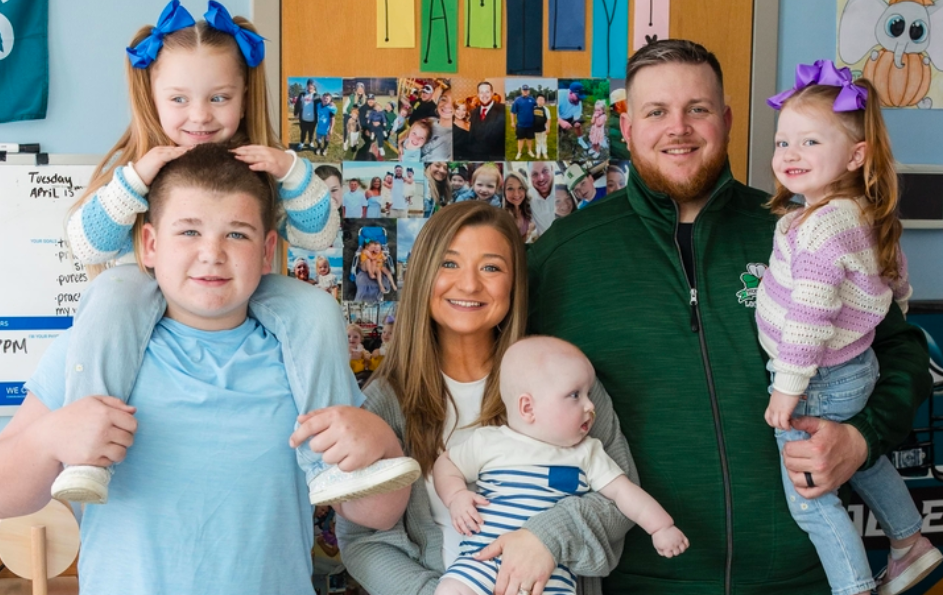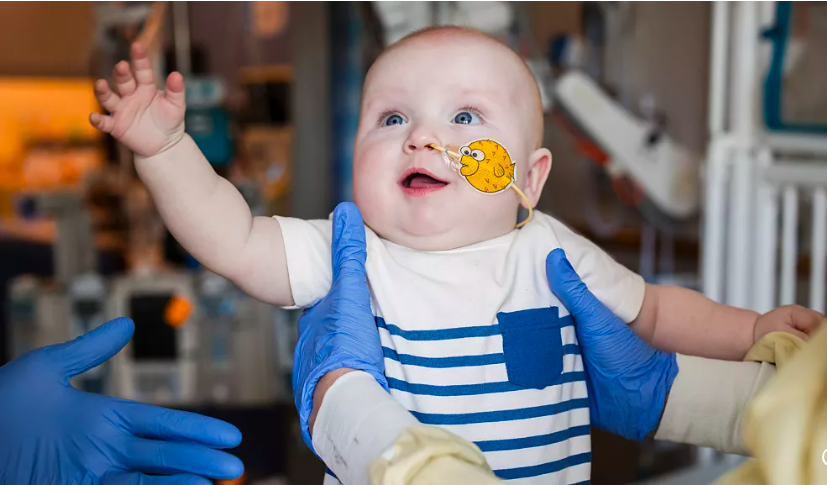“Baby With Rare Genetic Disorder Successfully Treated Using CRISPR Gene Editing in Medical Breakthrough”

Breakthrough CRISPR Therapy Gives New Hope to Baby With Rare Genetic Disorder
In a groundbreaking medical development, a baby in the United States known as "KJ" has become one of the first people in the world to be treated with a personalised CRISPR gene-editing therapy for a rare and often fatal genetic condition. KJ was diagnosed shortly after birth with carbamoyl-phosphate synthetase 1 deficiency (CPS1), a metabolic disorder that affects just one in a million babies and causes dangerous ammonia buildup in the blood.
CPS1 deficiency disrupts the body's ability to remove nitrogen, a waste product of protein digestion. In severe cases, it can lead to life-threatening symptoms such as vomiting, hypothermia, seizures, brain swelling, and coma. About 50% of infants born with the condition do not survive, even with early medical intervention.
Until now, standard treatment options have included strict dietary restrictions—mainly a low-protein diet—and the eventual need for a liver transplant. These methods, while sometimes effective, come with serious risks and do not cure the disorder.
Gene Editing: A Personalised Approach
In a case study published in the New England Journal of Medicine, researchers at the Children’s Hospital of Philadelphia detailed how KJ was treated with a customised CRISPR therapy at just six months old. The therapy was designed to edit the faulty gene in KJ’s liver that prevents the proper breakdown of ammonia.
Dr. Rebecca Ahrens-Nicklas, who leads the hospital’s gene therapy programme, said that early results are encouraging:
“While KJ will need to be monitored carefully for the rest of his life, our initial findings are quite promising.”
CRISPR, short for Clustered Regularly Interspaced Short Palindromic Repeats, is a powerful gene-editing tool that allows scientists to precisely cut DNA at targeted spots and either disable a faulty gene or replace it with a healthy version. In KJ’s case, the therapy specifically targeted the gene responsible for CPS1 and corrected the mutation directly within his liver cells.
Following the treatment, KJ’s dependence on medication to control his ammonia levels was significantly reduced, and his overall health and quality of life have improved.
A Glimpse Into the Future of Medicine

While KJ represents a single case, the implications are far-reaching. Dr. Ahrens-Nicklas noted:
“We hope he is the first of many to benefit from a methodology that can be scaled to fit an individual patient’s needs.”
The success of the procedure offers proof of concept that highly personalised, single-patient gene therapies are possible—and effective. Researchers believe that as the technology advances, other patients with rare genetic disorders could benefit from similar approaches, especially those with conditions linked to single-gene mutations.
Obstacles to Widespread Use
Despite the promising results, experts caution that widespread use of CRISPR therapies still faces major hurdles.
First, the technical challenge: Delivering CRISPR therapy to the liver—as in KJ’s case—is currently more feasible than delivering it to other organs like the brain or muscles. Gene-editing in other tissues presents complications in targeting, precision, and safety.
Second, the cost is substantial. The gene-editing treatment provided to KJ reportedly cost over €700,000, a price tag comparable to a liver transplant. Scaling this technology to more patients will require significant investment, manufacturing innovation, and possibly government or private support.
Moreover, there are safety considerations. Although KJ responded well to the treatment, researchers say it's too early to fully understand the potential long-term side effects of genome editing in young patients.
Dr. Alena Pance, a senior lecturer in genetics at the University of Hertfordshire, who was not involved in the case, highlighted another challenge:
“The CRISPR approach is applicable to any disease caused by a single nucleotide change. However, more often than not, diseases are caused by a variety of variants, so more general strategies could be more effective than very precise ones.”
A New Chapter in Rare Disease Treatment
Still, for families affected by devastating genetic disorders, KJ’s story represents a beacon of hope. Instead of relying solely on symptom management or organ transplantation, gene editing could offer a curative route for conditions that were once considered untreatable.
As KJ continues to grow, his health will be closely monitored by a team of specialists. The insights gained from his journey could guide the development of future treatments—not just for CPS1, but for a wide range of rare diseases that share a genetic origin.
While challenges remain in affordability, safety, and scale, KJ’s case affirms a powerful truth: the future of medicine is personal—and with the help of science, it’s arriving faster than we imagined.
Conclusion
KJ’s case marks a historic moment in the evolution of genetic medicine. As one of the first patients to receive a personalised CRISPR therapy for a life-threatening condition, his journey offers both hope and a glimpse into the future of precision treatment. While the road ahead includes ongoing monitoring, high costs, and technical hurdles, the success of this therapy lays the foundation for broader use in treating other rare, gene-based illnesses. KJ’s story is not just a medical milestone—it’s a powerful reminder of how science and innovation can transform lives, one gene at a time.
- Art
- Causes
- Crafts
- Dance
- Drinks
- Film
- Fitness
- Food
- Jogos
- Gardening
- Health
- Início
- Literature
- Music
- Networking
- Outro
- Party
- Religion
- Shopping
- Sports
- Theater
- Wellness


